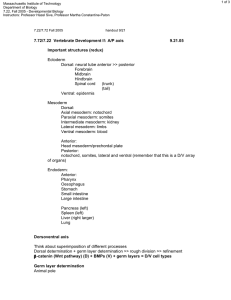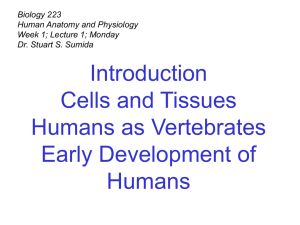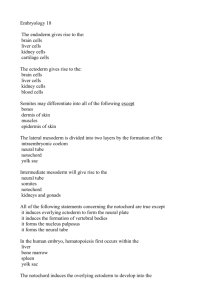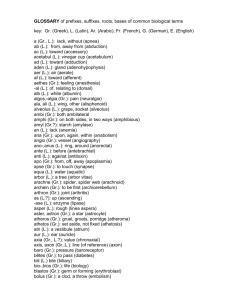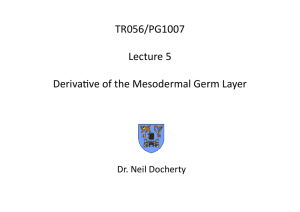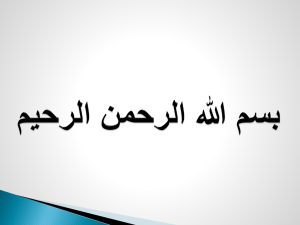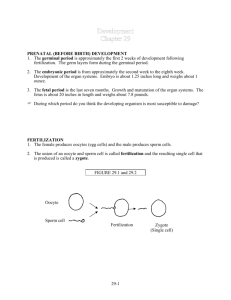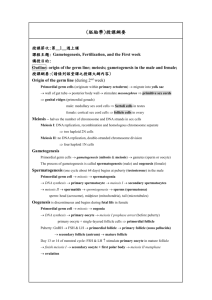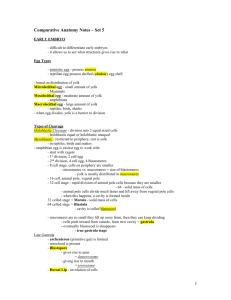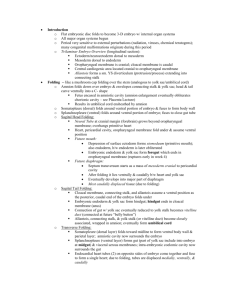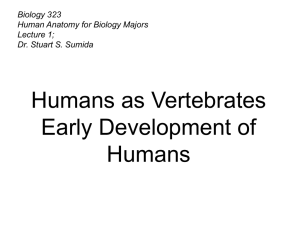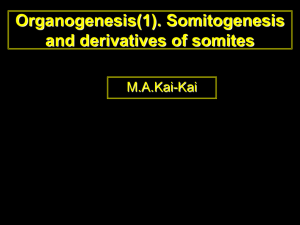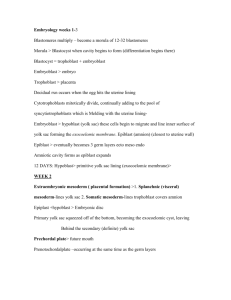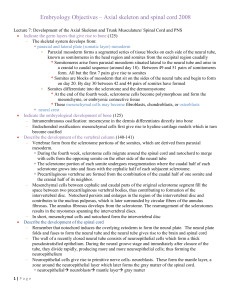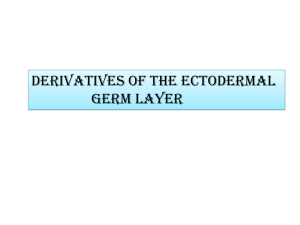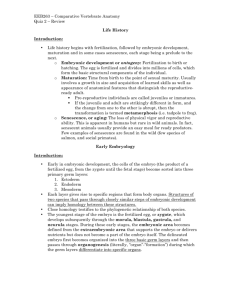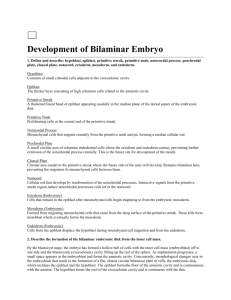Mesoderm - UTCOM 2012 Wiki
advertisement
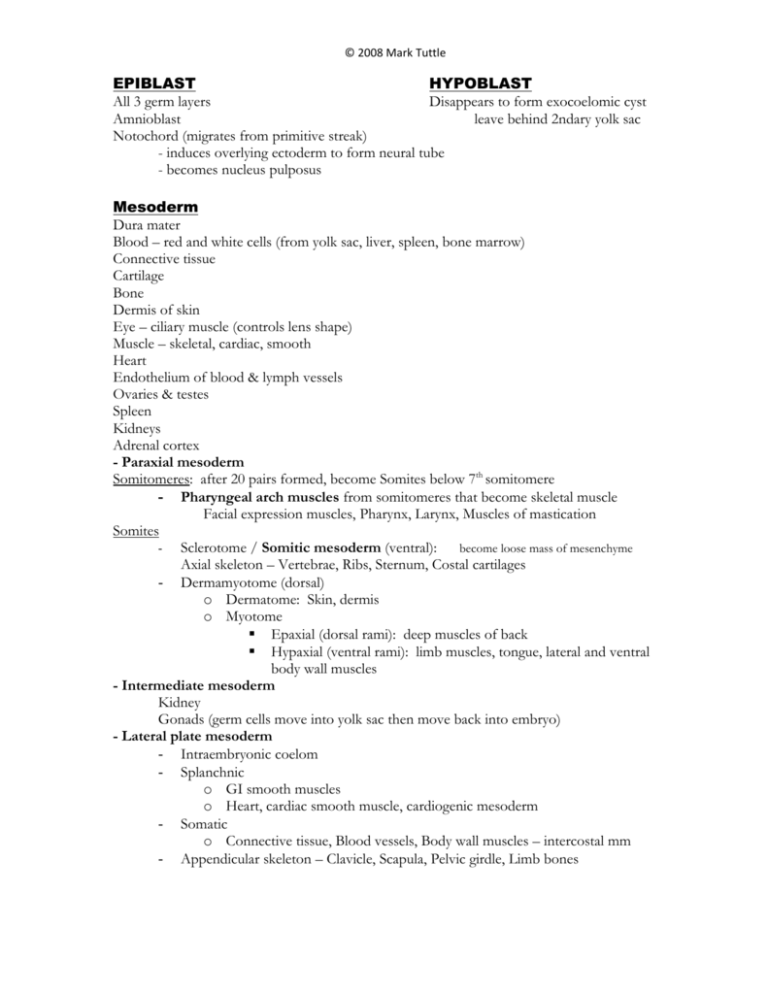
© 2008 Mark Tuttle EPIBLAST HYPOBLAST All 3 germ layers Disappears to form exocoelomic cyst Amnioblast leave behind 2ndary yolk sac Notochord (migrates from primitive streak) - induces overlying ectoderm to form neural tube - becomes nucleus pulposus Mesoderm Dura mater Blood – red and white cells (from yolk sac, liver, spleen, bone marrow) Connective tissue Cartilage Bone Dermis of skin Eye – ciliary muscle (controls lens shape) Muscle – skeletal, cardiac, smooth Heart Endothelium of blood & lymph vessels Ovaries & testes Spleen Kidneys Adrenal cortex - Paraxial mesoderm Somitomeres: after 20 pairs formed, become Somites below 7th somitomere - Pharyngeal arch muscles from somitomeres that become skeletal muscle Facial expression muscles, Pharynx, Larynx, Muscles of mastication Somites - Sclerotome / Somitic mesoderm (ventral): become loose mass of mesenchyme Axial skeleton – Vertebrae, Ribs, Sternum, Costal cartilages - Dermamyotome (dorsal) o Dermatome: Skin, dermis o Myotome Epaxial (dorsal rami): deep muscles of back Hypaxial (ventral rami): limb muscles, tongue, lateral and ventral body wall muscles - Intermediate mesoderm Kidney Gonads (germ cells move into yolk sac then move back into embryo) - Lateral plate mesoderm - Intraembryonic coelom - Splanchnic o GI smooth muscles o Heart, cardiac smooth muscle, cardiogenic mesoderm - Somatic o Connective tissue, Blood vessels, Body wall muscles – intercostal mm - Appendicular skeleton – Clavicle, Scapula, Pelvic girdle, Limb bones © 2008 Mark Tuttle Ectoderm Epidermis, Hair, Nails Eye lens Sweat and Sebaceous glands Mammary glands Pituitary gland Olfactory epithelium Teeth enamel - Neuroectoderm (forms neural plate which folds to form neural tube) Central Nervous System (CNS) – brain, spinal cord Iris, retina of eye - Neural crest (on either side of neural tube) Melanocytes Pia mater – filum terminale, denticulate ligaments Arachnoid mater Adrenal medulla Pharyngeal arch skeletal components - Cartilage, Bone, outer covering Peripheral Nervous System (PNS) – Sympathetic and Parasympathetic neurons Ganglia– autonomic, dorsal root; Schwann cells Sensory neurons of proprioception (awareness of movement & position of parts of your body) Cardiac nerves, pulmonary and aortic valve, septum between pulmonary trunk and aorta Endoderm Epithelial lining of: Gastrointestinal tracts Respiratory tracts Bladder Vagina Thymus Liver Pancreas Thyroid and Parathyroid glands originally from yolk sac Extraembryonic splanchnic mesoderm – become blood and blood vessels mesodermal wall of secondary yolk sac, wall of chorion To get CSF, lumbar puncture needle pierces in order: Supraspinous ligament Interspinous ligament Ligamentum flava Epidural space Dura mater Arachnoid mater CSF is in subarachnoid space
